The answer to this question depends. In fact, lowering prices can either increase sales, decrease sales, or have no impact. But with a range of possible results, how can we then avoid blind guesses?
Which manifests in your business will depend on the product’s (or service’s) price elasticity. Stay with me, we’ll explain price elasticity with some practical applications and a simplified approach, even at the expense of economic semantics.
Page Contents
Sales vs. Sales volume vs. Profit
Let’s get a few terminologies and assumptions out of the way:
- SALES = Revenue = Price per unit x Quantity sold
- SALES VOLUME = Demand = Quantity sold
- PROFIT = Earnings = Sales less Costs
This post discusses how your SALES figure (i.e., Price per unit x Quantity sold) is affected by a decrease in price.
(Related: “When Selling Less Earns More” focuses on how it’s possible to achieve higher earnings with lower sales.)
Effects of lowering prices: Increase sales vs. decrease sales
The widespread notion is this: Lowering prices will result in more demand. The increase in demand more than offsets the lower price. And the result is a larger sales figure.
Here’s an example of how lowering prices increases sales:
| Price (P) | Quantity (Q) | Sales (P x Q) |
|---|---|---|
| 100.00 | 100 | 10,000.00 |
| 95.00 | 110 | 10,450.00 ⬆ |
| 90.00 | 120 | 10,800.00 ⬆ |
| DECREASE | INCREASE | INCREASE |
But does quantity really change by that much? What if we (still) increase the quantity sold, but by a smaller amount?
Here’s an example of how lowering prices decreases sales, despite the increase in quantity sold.
| Price (P) | Quantity (Q) | Sales (P x Q) |
|---|---|---|
| 100.00 | 100 | 10,000.00 |
| 95.00 | 105 | 9,975.00 ⬇ |
| 90.00 | 110 | 9,900.00 ⬇ |
| DECREASE | INCREASE | DECREASE |
These are two scenarios that show how lowering prices can increase sales (Table 1) or decrease sales (Table 2), despite having increased quantities.
Understanding demand curves
A demand curve plots the expected sales volume (i.e., quantity demanded) at various price levels. The simplifying assumption is that the quantity demanded increases as we decrease the price. That is why a typical demand curve is downward sloping.
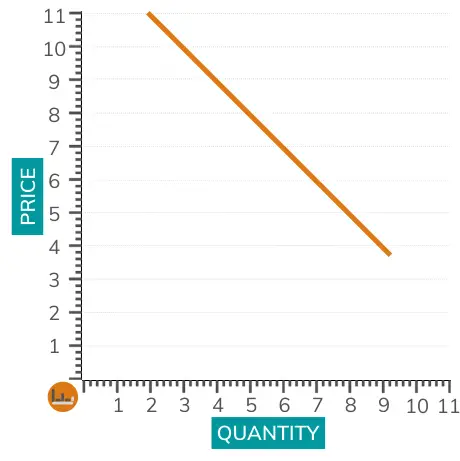
We generally buy more of something when it costs less.
(There are exceptions to this, particularly when the price is used as a marketing tactic to attract more buyers. For instance, when the price is perceived as a signal of quality. Ironically, inferior goods also have upward-sloping demand curves.)
Demand curves actually come in different slopes, dictated by the product’s nature. They’re also typically not straight lines, but we’ll assume they are for simplicity.
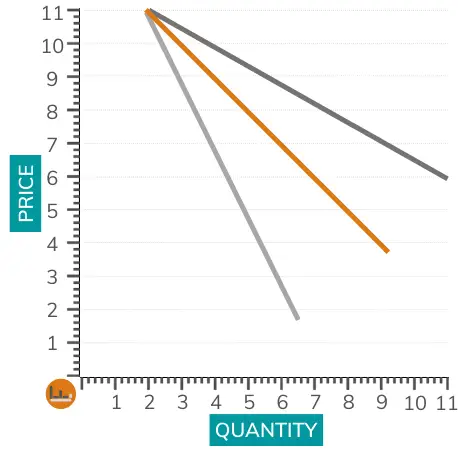
Price sensitivity depends on both the slope and starting point
The 3 types of demand curves above show different levels of price elasticities or price sensitivities.
For our purposes, we’ll call “price elasticities” as “price sensitivities” as it’s a presumably less intimidating name.
Also for simplification, we’ll just call the technically correct terms “less sensitive” and “more sensitive” as “insensitive” and “sensitive,” respectively.
Price sensitivity is measured by how much demand changes for every price change.
“If I lower my price by 10%, then by how much does demand change? Also by 10%? Or by more or less?” This is the question that price sensitivity tries to answer.
Slope is steep: Less price-sensitive
A steep demand curve shows how quantity demanded is INSENSITIVE to changes in price. Remember that the price is plotted on the y-axis and quantity is on the x-axis.
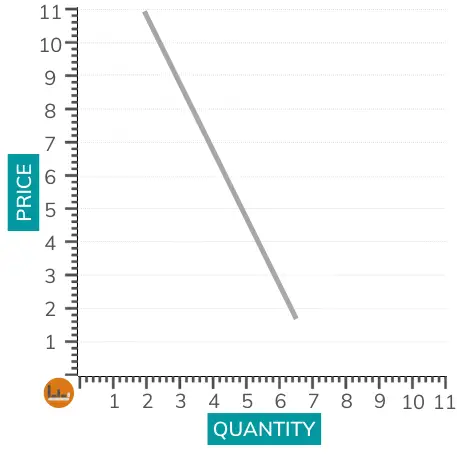
When we change the price, notice how quantity moves by a little. Compare this to a flat demand curve.
Slope is flat: More price-sensitive
A flat demand curve shows how quantity demanded is very sensitive to changes in price.
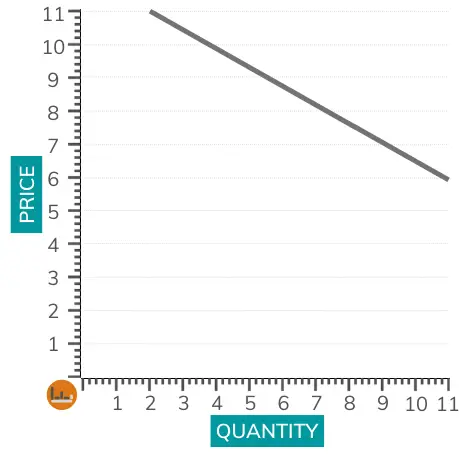
When we change the price, notice how the quantity demanded moves by a lot.
Starting point: Where you are on the slope
For any given demand curve, price sensitivity is also based on your starting point.
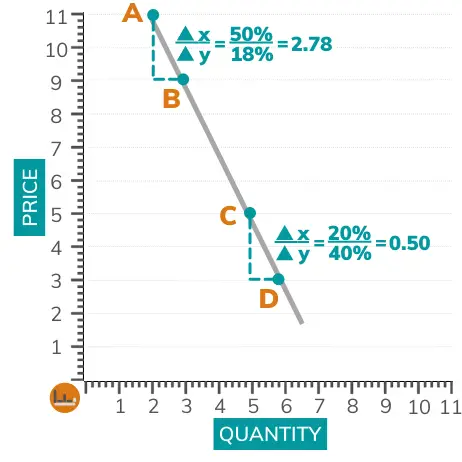
From point A to B on the graph above, we’re moving from a price of 11.00 to a price of 9.00. Quantity demanded changes from 2 to 3.
- Quantity change (from 2 to 3) = 50%
- Price change (from 11 to 9) = 18%
- Price sensitivity = 50% / 18% = 2.78
The resulting price sensitivity of 2.78 means that for every 1 unit of change in price, quantity changes by 2.78x. In other words, the quantity demanded at this point is very sensitive to changes in price.
From point C to D, we’re moving from a price of 5.00 to 3.00. Quantity demanded changes from 5 to 6.
- Quantity change (from 5 to 6) = 20%
- Price change (from 5 to 3) = 40%
- Price sensitivity = 20% / 40% = 0.50
In contrast to the change from A to B, the change from C to D gives a price sensitivity of 0.50. This means that for every 1 unit change in price, quantity changes by just 0.50. We see that quantity demanded is insensitive to price changes at this point.
Real-world application of price sensitivities
Price sensitivity is very much about the story of a product’s unique characteristics rather than blind categorization. What I mean is this.
Electronic products and luxury items are typically price-sensitive. That is, a large price increase in electronic goods will usually cause a large decrease in quantity — people buy a lot less of the product. But the iPhone has challenged this. An increase in the price of iPhones might lead to lower sales, but usually not large enough to offset the change in price.
So take these samples with a grain of salt and know that exceptions exist:
Price sensitive products (more elastic):
- Cars
- Fast food
- Travel
Price insensitive products (more inelastic):
- Water
- Electricity
- Fruits
Which case applies to your business?
1. The product’s nature and unique characteristics (i.e., the slope of the demand curve), and
2. Your starting point; where on the demand curve you’re currently selling at.
Are you at the higher end of your price limit? If so, a price reduction might lead to a larger increase in quantity, and therefore sales.
Are you selling a product that’s revered and somewhat insensitive to price movements? Then a price reduction might do you more harm than good.
Knowing which scenario applies ultimately comes down to an understanding of your product. This means knowing your price range, as well as the nature and unique selling points of your product.
The guide here lays the foundation to eventually knowing the effects of lowering prices on sales. But, unfortunately, a lot of the inputs aren’t readily available information. You’ll have to find out through experimentation and data analysis. You’ll have to test out a new price, and there’s no way around it.
At the very least, the information here will aid in your decision, as well as help you make sense of the results. That is a lot better than blind guesses.
So, does lowering prices increase your sales? If so, what product or service do you provide? Help the community by sharing your experiences in the comments section below.
Read more, select a topic:








